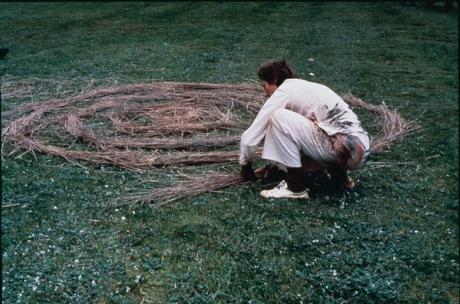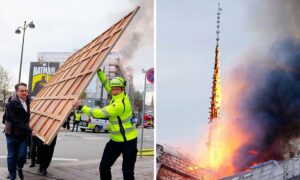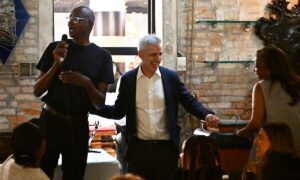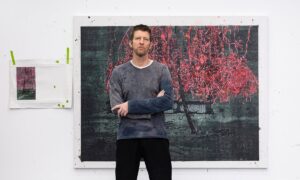
Last October, over 60% of Australians voted against constitutional recognition of Aboriginal and Torres Strait Islander people in a national referendum. The vote further tarnished Australia’s international reputation when it comes to its treatment of the country’s autochthonous citizens.But, for those exposed to Australia’s cultural efforts overseas, or familiar with the country’s museums, artists or curators, the referendum result has been more difficult to reconcile. Because, in the cultural arena at home and abroad, Australia appears willing to air its dirty laundry in public.In 2021, London’s Tate Modern, in partnership with Sydney’s Museum of Contemporary Art (MCA), mounted A Year in Art: Australia 1992, an exhibition that explored the continuing relationship Aboriginal and Torres Strait Islander peoples have with their lands, set against a backdrop of violent colonialism that began with the British invasion.Staged in the run-up to the referendum, the exhibition drew more than a million visitors and exposed international audiences to “what’s happening [in Australia] within a contemporary perspective”, says Keith Munro, a Kamilaroi man and the MCA’s director, First Nations art and cultures, in an interview with The Art Newspaper.In another display, Indigenous artist Richard Bell’s Aboriginal Tent Embassy, an installation that consists of a canvas tent adorned with protest signs, which Bell describes as “a symbol of resistance to the colonial power structure that still oppresses us”, was presented at Tate Modern in London last year.Modelled on the first Aboriginal tent embassy erected by activists on the grounds outside Parliament House in Canberra in 1972, the Tate commission was an “important milestone”, Munro says.MCA’s support of First Nations artists and curators holding a mirror to Australian society is not unique. In 2021, Sydney’s Powerhouse Museum staged Eucalyptusdom, an exhibition that explored Australia’s ever-changing relationship with the gum tree. Presented through 400 collection objects and 17 newly commissioned works, the exhibition also raised questions about the Powerhouse’s complicity in clearing Aboriginal land in the 19th century to produce eucalyptus oil. According to Nathan Mudyi Sentance, a Wiradjuri man and the head of collections, First Nations, at the museum, Eucalyptusdom demonstrated that reckoning with Australia’s history does not have to be just a “guilt-ridden exercise”, but also “a starting point for a better future”.While outsiders to Australia might assume the referendum defeat would see these institutions curtail programmes, the opposite is true. The Powerhouse is committed to “truth-telling”, Sentance says. “We have already collected different perspectives, including those from ‘no’ voters, to teach future generations about the referendum,” he says.Prioritising First Nations voices and perspectives is “only just starting”, says Lisa Havilah, the Powerhouse’s director. Most institutions are still “run by white people, me included”, she says. “There still is embedded, to a degree in [some institutions], mainstream conservatism.”The process of decolonising collections, embracing Indigenous knowledge systems and employing different methods of working with First Nations acquisitions have been hard-won gains pioneered by Indigenous curators over many years.The country is now undergoing an unprecedented cultural infrastructure building boom, one coupled with an embrace of First Nations perspectives that once faced broad institutional resistance.In 2025, the new A$915m ($600m) Powerhouse Parramatta will open in western Sydney, the centrepiece of an A$1.4bn ($920m) renewal of the museum’s four Sydney locations. In the same year, the National Gallery of Victoria will open NGV Contemporary, part of the A$1.7bn ($1.1bn) Melbourne Arts Precinct development. Last year, the Art Gallery of New South Wales opened Sydney Modern at a cost of A$344m ($226m).At the other end of the scale, Artspace in Sydney, one of the country’s longest-running art centres, was due to reopen as we went to press after a A$19.2m ($12.6m) renovation. Forced to the brink of closure by the pandemic, Artspace only just survived due to “strategic forward thinking” and a dose of “good luck”, says the centre’s director, Alexie Glass-Kantor. In Australia’s art eco-system, Artspace fulfils a critical role with its visiting international curator programme that creates opportunities for Australian artists to show overseas. Artspace’s inaugural reopening exhibition, Indigenous artist Jonathan Jones’s untitled (transcriptions of country) (until 11 February) developed out of a partnership with the then Fondation Lafayette curator François Quintin, and was realised at the Palais de Tokyo in 2021.The moral questionWith what seemed to be a broad acceptance of First Nations perspectives, why did the majority of Australians vote down constitutional recognition? Australian society is conservative and “risk averse”, argues Glass-Kantor, “as we saw with Australia’s pandemic response”.Until February 2023, polling revealed that most Australians supported constitutional recognition. After all, in the 1967 referendum on whether Aboriginal people should be included as part of the Australian population, a staggering 91 % of Australians voted “yes”.Having lost the federal election to the Albanese Labor government in May 2022, the Coalition (of the Liberal and National parties) had been searching for a platform to reconnect with voters. When the newly-minted Labor government announced a referendum on an Aboriginal voice to parliament, the opposition seized on it—turning their backs on 50 years of bipartisan support for the measures.The No campaign’s strategy was simple: make the proposed changes to the constitution appear overly complex and ambiguous. Targeting traditionally conservative voters with slogans such as “If you don’t know, vote no”, and harnessing the concerns of so-called “progressive no” voters—people who believe Aboriginal and Torres Strait Islander people deserve a treaty—the “no” vote prevailed.“Regardless of where Australia voted on this issue, what is the path forward that allows Aboriginal and Torres Strait Islander people to get out of the socio-economic basement?” Munro asks, adding: “The ‘moral question’ will be a continuing source of shame when people look back to this opportunity.”Over the Australian summer, a number of First Nations exhibitions have opened across the country, including Emily Kam Kngwarray at the National Gallery of Australia, Canberra; the Tarnanthi Festival at the Art Gallery of South Australia, Adelaide; and the group exhibition Wurrdha Marra at the NGV. While Australians are receptive to exhibitions by First Nations artists, it appears they are less so to the idea of recognising Aboriginal and Torres Strait Islander people in the constitution.“First Nations exhibitions are not created to change the minds of non-Indigenous Australians,” Sentance says, but to “remind us of our power”.


























